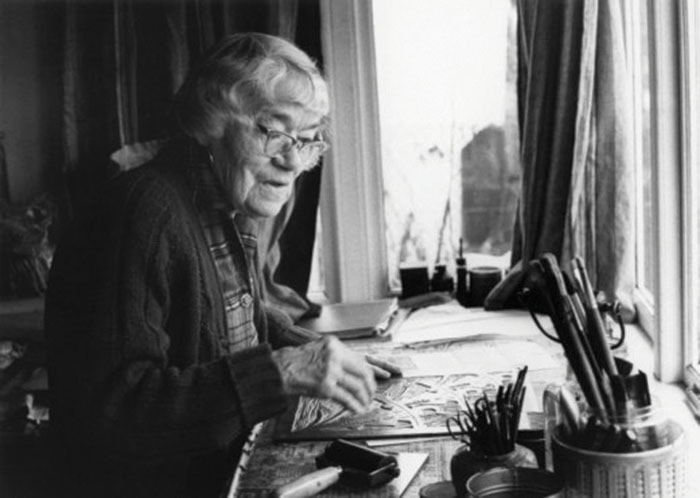The Bank of England has put a call out for nominations for who should be on the new £20 note when it goes into production, and one Suffolk woman has been running a campaign to get long-time Campbell River artist Sybil Andrews selected for the honour.
“The next £20 banknote will celebrate Britain’s achievements in the visual arts, and we would like the public to nominate who they would like to feature on the note,” the bank announced earlier this year.
“There are a wealth of individuals within the field of visual arts whose work shaped British thought, innovation, leadership, values and society and who continue to inspire people today,” Mark Carney – former Governor of the Bank of Canada who now holds that position with the Bank of England – said in the announcement. “I greatly look forward to hearing from the public who they would like to celebrate.
Jane Bashem, Vice Chair of the South Suffolk Labour Party, took up that call, and is putting her weight behind the Campbell River icon, who grew up in Suffolk.
“I can’t think of a more inspirational artist for these times,” Basham wrote in an open letter defending her choice.
“(Andrews) took an apprenticeship as a welder when her parents couldn’t afford to send her to train in the visual arts. Her commitment and hard work led her to producing some unforgettable images that will – to my mind – always carry her strong associations with Suffolk.”
Ken Blackburn, Executive Director of the Campbell River Arts Council, emphatically agrees. The Grosvener School of Modern Art – where Andrews worked following the completion of her degree at Heatherley’s School of Modern Art in London – and the work which came out of it, was a driving force behind the art world’s revived interest in printmaking in the early to mid 20th century, and Sibyl’s work was central to the school itself.
“Sibyl and Futurism and the Grosvener School are very central to the English avant garde of the 20s and 30s,” Blackburn says. “They used Sybil and her groups’ work on all of their posturing for sports events, and in advertising…they were huge.”
Once the nomination period closes on July 19, the nominations will be whittled down to a shortlist of nine for testing in focus groups, and then Carney himself will make the final choice as to who will grace the face of the bill between the remaining three to five finalists.
The note will then be “introduced into circulation in the next three to five years,” according to the Bank of England.
It might be a tough go for Andrews to win the nomination, however, as other artists being considered are such famous names as Francis Bacon, George Stubbs, William Blake, J.M.W. Turner, John Constable and Stanley Kubrick.
